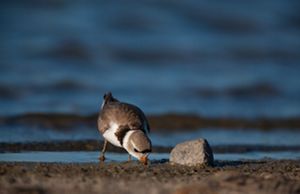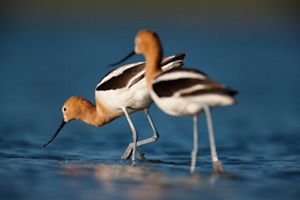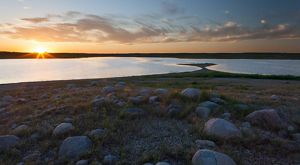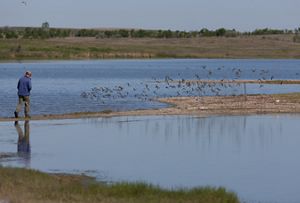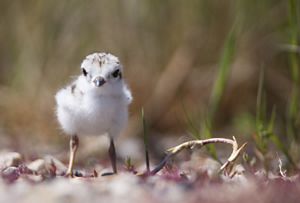What to See: Plants
Three major plant communities are found at Williams Preserve. The higher areas were originally covered by a mixed-grass prairie dominated by needle and thread, blue grama, and junegrass. Much of this community was plowed and farmed for small grains before the Conservancy purchased it. These agricultural lands have since been planed back to tame introduced species, primarily crested wheatgrass and smooth brome. Over time the Conservancy plans to restore native mixed-grass species to these old fields. In scattered places across the preserve, however, there are still patches of native prairie that are serving as sources of reintroduction of native plant species.
The saline meadow community is the second type of plant community found at the preserve. This community surrounds the large alkali lake basins and supports a sparse assemblage of species including saltgrass, alkaligrass and western wheatgrass.
The third type of plant community is the deep marsh community associated with the freshwater wetlands of the preserve. Although considered fresh, the chemistry of these wetlands ranges from brackish to very brackish. Several species of bulrushes and sedges are the dominant species.
What to See: Animals
The shallow lakes of the Williams preserve are important migratory stopover areas for birds during both spring and fall migration. Large numbers of waterfowl and sandhill cranes are often present. During the summer breeding season, colonies of gulls and cormorants can be observed on some of the islands in Lake Peterson and Pelican Lake.
The most important species on the preserve is the piping plover. This shorebird, federally-listed as threatened, nests along the edges of the alkali lakes. The Williams Preserve supports one of the largest breeding concentrations of this bird in the world. During May, June, and July, the beach areas along the lakes and wetlands are closed to visitors to prevent disturbance to the nesting birds.
Another avian species of interest is the Baird's sparrow. This declining grassland nesting species are found in limited numbers around the preserve. Other nesting species of note include the avocet, willet, northern harrier, and grasshopper sparrow.
There is no potable water at the preserve or other facilities. The town of Turtle Lake is located nearby with facilities.
Conditions are often windy. At certain times of the year, wood ticks can be abundant.
Hunting and Fishing Activities
The preserve is open to public walk-in hunting during the Fall hunting season. Check out our Preserve Visitation Guidelines for more information the Conservancy's hunting and fishing policies on North Dakota preserves. Download rules and a map specific to the John E. Williams Preserve.
Plan Your Visit
For more information on visiting this and other North Dakota preserves, check out our Preserve Visitation Guidelines.


